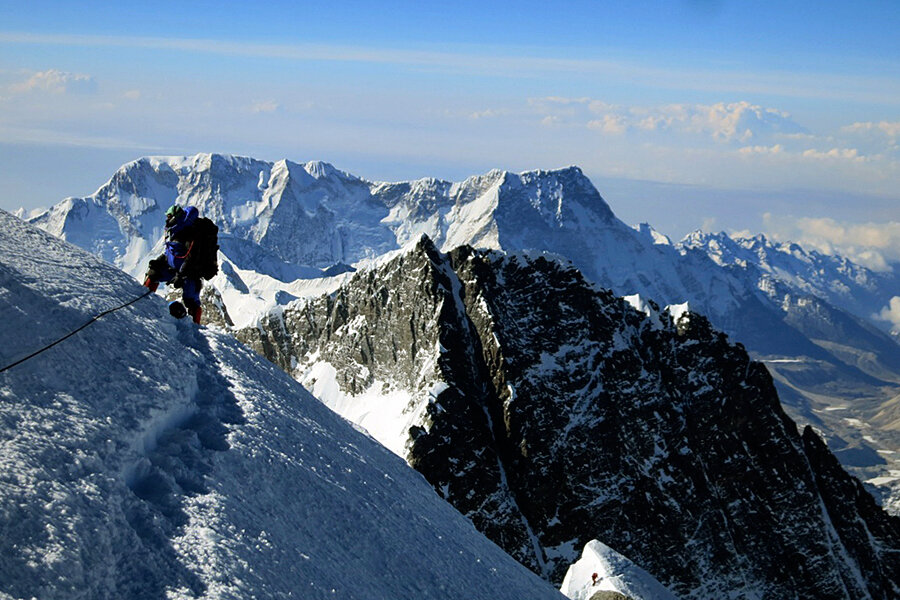Mount Everest: avalanche sweeps down world's highest peak, at least 12 killed
Loading...
| KATMANDU, Nepal
An avalanche swept down a climbing route on Mount Everest early Friday, killing at least 12 Nepalese guides and leaving four missing in the deadliest disaster on the world's highest peak. Several more were injured.
The Sherpa guides had gone to fix ropes for other climbers when the avalanche struck an area known as the "popcorn field" for its bulging chunks of ice at about 6:30 a.m., Nepal Tourism Ministry official Krishna Lamsal said from the base camp, where he was monitoring rescue efforts.
An injured survivor told his relatives the path up the mountain was unstable just before the avalanche struck at an elevation just below 21,000 feet (6,400 meters). As soon as the avalanche hit, rescuers, guides and climbers rushed to help.
Rescue workers pulled out 12 bodies from under mounds of snow and ice and were searching for the four missing guides, Lamsal said. Officials had earlier said three were missing.
Four survivors were injured badly enough to require airlifting to a hospital in Katmandu. One arrived during the day, and three taken to the foothill town of Lukla could be evacuated Saturday. Others with less serious injuries were being treated at base camp.
The avalanche struck ahead of the peak climbing season, when hundreds of climbers, guides and support crews were at Everest's base camp preparing to climb to the summit when weather conditions are at their most favorable early next month. They had been setting up camps at higher altitudes, and guides were fixing routes and ropes on the slopes above.
The wall of snow and ice hit just below Camp 2, which sits at an elevation of 21,000 feet on the 29,036-foot mountain, said Ang Tshering of the Nepal Mountaineering Association.
One injured guide, Dawa Tashi, lay in the intensive care unit at Grande Hospital in the capital late Friday after being evacuated from the mountain. Doctors said he suffered several broken ribs and would be in the hospital for a few days.
Tashi told his visiting relatives that the Sherpa guides woke up early and were on their way to fix ropes to the higher camps but were delayed because of the unsteady path. Suddenly the avalanche fell on the group and buried many of them, according to Tashi's sister-in-law Dawa Yanju.
The Sherpa people are one of the main ethnic groups in Nepal's alpine region, and many make their living as climbing guides on Everest and other Himalayan peaks.
More than 4,000 climbers have summited Everest since 1953, when it was first conquered by New Zealander Edmund Hillary and Sherpa Tenzing Norgay. Hundreds have died attempting to reach the peak.
The worst recorded disaster on Everest had been a fierce blizzard on May 11, 1996, that caused the deaths of eight climbers, including famed mountaineer Rob Hall, and was later memorialized in a book, "Into Thin Air," by Jon Krakauer. Six Nepalese guides were killed in an avalanche in 1970.
Earlier this year, Nepal announced several steps to better manage the heavy flow of climbers and speed up rescue operations. The steps included the dispatch of officials and security personnel to the base camp at 17,380 feet (5,300 meters), where they will stay throughout the spring climbing season that ends in May.







